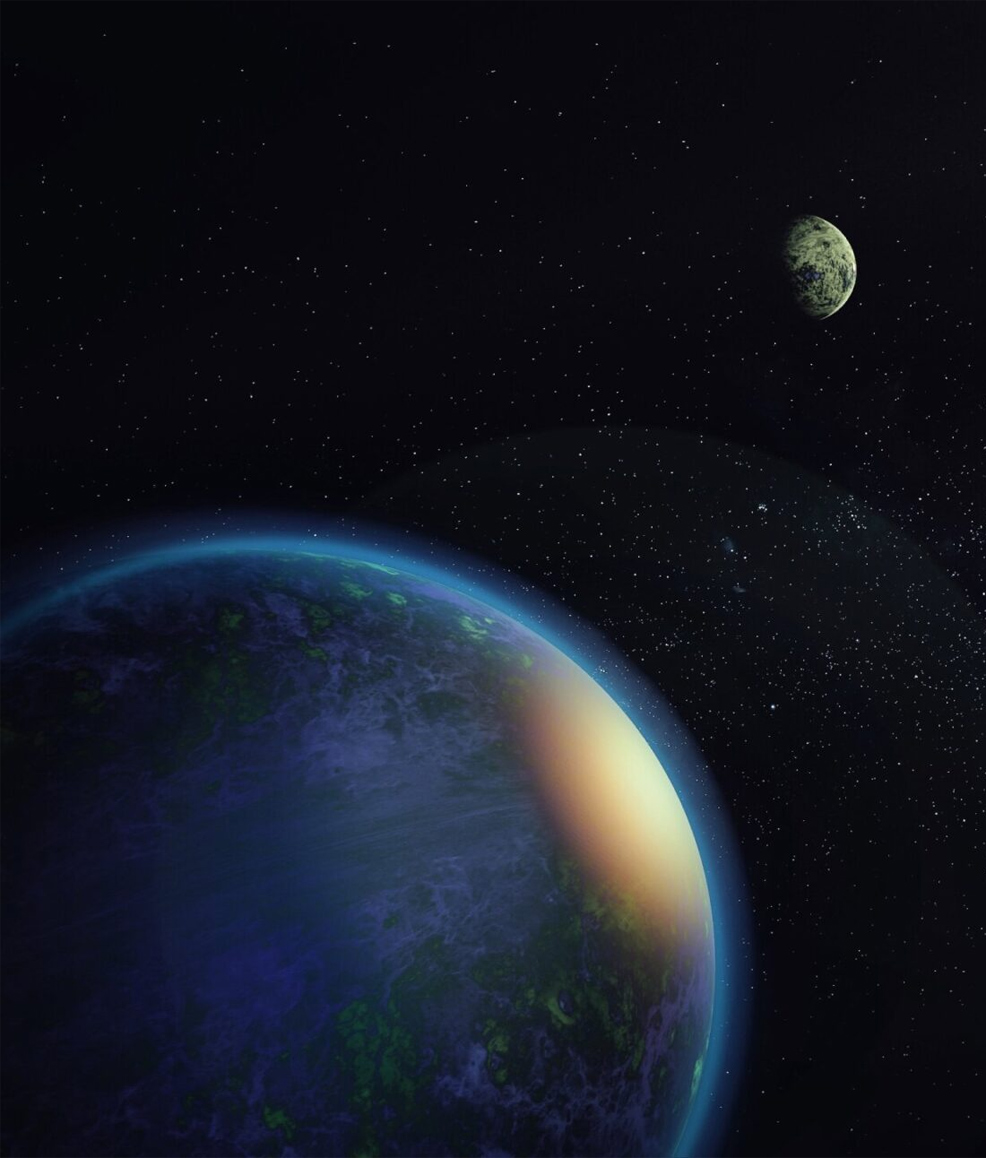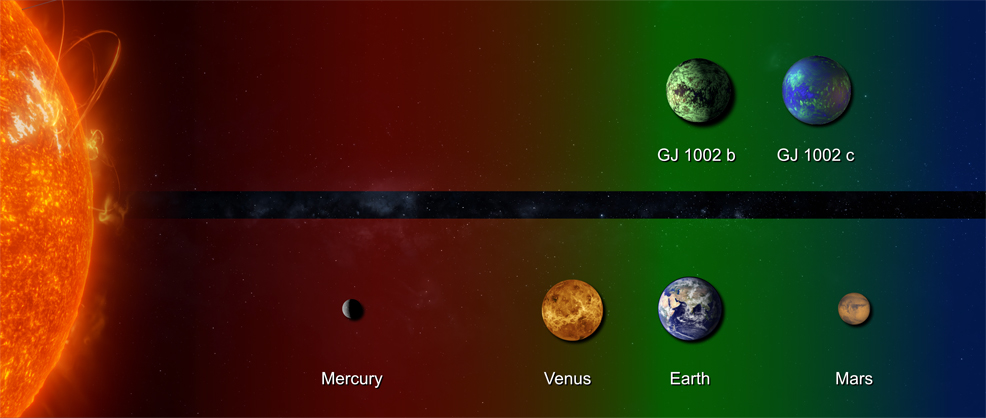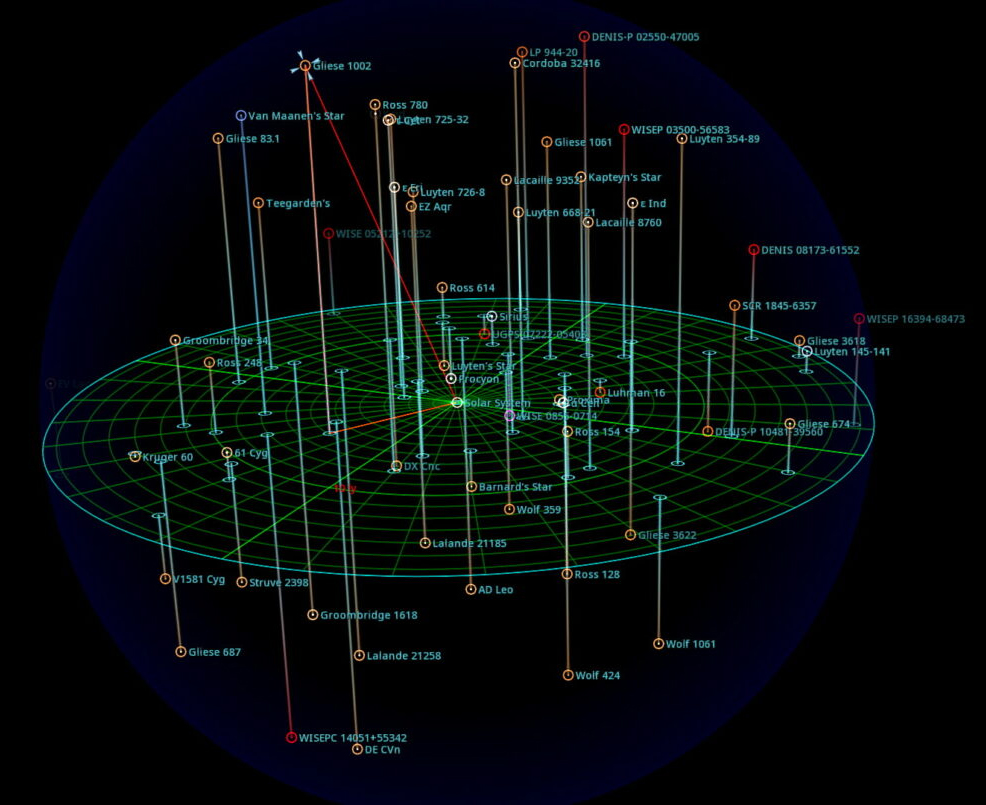
9th January 2023 Two potentially Earth-like planets found 16 light years away An international team led by researchers at the Instituto de Astrofísica de Canarias (IAC), Spain, has found two planets with Earth-like masses in the habitable zone of a red dwarf star, just 16 light years from our own Solar System.
"Nature seems bent on showing us that Earth-like planets are very common," explains Alejandro Suárez Mascareño, an IAC researcher, first author of a study that appears in Astronomy & Astrophysics. "With these two, we now know seven in planetary systems quite near to the Sun." Gliese 1002, also known as GJ 1002, is an M-class red dwarf. Although fairly close in astronomical terms – at only 15.8 light-years distance – the star is too dim for naked eye visibility. It has just 12% of the Sun's mass and 14% of its radius, burning at a relatively cool temperature of 3,024 K (2,751 °C; 4,984 °F). For this study, astronomers combined measurements from two sources – the ESPRESSO instrument on the Very Large Telescope (VLT) in Chile, and the CARMENES instrument on the Calar Alto Observatory in Spain – to spot potential planets lurking in the GJ 1002 system. They used a technique known as the "radial velocity" method, which can detect tiny oscillations in stars caused by planets orbiting them. In this case, the combination of ESPRESSO and CARMENES provided an ultra-high accuracy of 30 cm/sec, not attainable with any other instrument in the world. "Either of the two groups would have had many difficulties if they had tackled this work independently. Jointly, we have been able to get much further than we would have done acting independently," explained Suárez Mascareño. From the data, Suárez Mascareño and his colleagues identified two exoplanets, which go by the designations of GJ 1002 b and GJ 1002 c. The latter is the outermost and larger of the two, at 1.1 Earth radius and 1.35 Earth masses. It has an Earth Similarity Index (ESI) of 0.58. The innermost planet is even more similar to our own, with a radius of 1.03 and mass of 1.08 Earths. Its ESI is 0.86, the 8th highest recorded of the 5,000+ confirmed exoplanets.
GJ 1002 b and GJ 1002 c are very close to their star, at just 6.8 and 11 million km, respectively. For comparison, the orbit of Mercury in our Solar System is around 48.2 million km. This means their "years" are only 10.3 and 21.2 days. However, this places both within its habitable zone, given the red dwarf's much lower temperature than our G-type Sun. Gliese 1002 is also a "quiet" red dwarf, unlikely to release flares that could harm planetary atmospheres. Although promising candidates in the search for alien life, the presence and composition of atmospheres is not yet confirmed. Future instruments, such as the ANDES spectrograph on the Extremely Large Telescope, may detect these. In addition, both planets satisfy the characteristics needed for them to be objectives for the LIFE mission, which is presently in a study phase. Below is a 3D map, centred on our Solar System, showing the positions of the nearest stars. The Universe has no "up" or "down", but the green grid represents the plane of our galaxy, meaning that Gliese 1002 is above us from our perspective. It joins a growing list of nearby stars now harbouring Earth-like candidates that warrant further investigation. The distances are almost unimaginable to us today – but perhaps in the coming centuries, humans or their AI descendants will be using maps like this to determine the best places for settlement, as they expand into the galaxy. Gliese 1002 may well be one of the favoured destinations.
Comments »
If you enjoyed this article, please consider sharing it:
|









